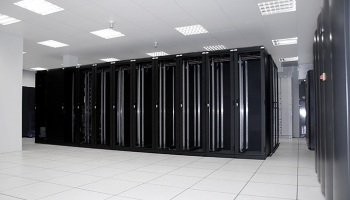Engineering leader ASHRAE is gearing towards even more “aggressive economisation” in data centres as it plans to widen the temperature and humidity ranges for servers in the next version of its guidelines.
The data centre world relies heavily on “Thermal Guidelines for Data Processing Environments from ASHRAE (the American Society of Heating, Refrigerating and Air-conditioning Engineers) for guidance on how to cool servers, and the forthcoming third edition is aimed to give data centre managers more scope for energy efficiency, by extending the recommended temperature ranges for IT equipment.
“The third edition will enable compressorless cooling – all cooling through economisers – in many applications,” said ASHRAE. It will also introduce the temperature and humidity upper limits for class 3-4 servers, which is currently not available.
ASHRAE classification
 ASHRAE classifies IT equipment into four levels according to the intake temperature and humidity ranges they can support.
ASHRAE classifies IT equipment into four levels according to the intake temperature and humidity ranges they can support.
Currently, the association recommends a maximum temperature of 27°C and a maximum dew point (DP) of 15°C as optimal for data centre conditions with class 1-2 servers – the normal servers used in most facilities.
As for classes 3 and 4, it suggests higher “allowable” temperature of 35°C and 40°C respectively.
“Before ASHRAE, each vendor had its own range of temperature and humidity,” said Liam Newcombe of Romonet and the BCS data centrespecialist group. In ASHRAE, vendors agreed one set of temperature and humidity standards for their equipment, making it easier for companies to operate data centres.
While increasing the temperature tolerance of IT equipment is good news, Newcombe does not think the new classes 3 and 4 will change the way data centres are put together in the UK, because they are of benefit innwarmer climates. “It is not necessarily the case that a bank in Yorkshire would want to buy class 3 or 4 servers,” he said. “They should never need a chiller with Class 1 or 2 servers.”
However, increasing the temperature tolerances of IT equipment is nothing new, and some observers say ASHRAE’s guidance is lagging behind many data centres.
“Most companies in the cloud business are already procuring servers that operate well outside of the ASHRAE specs to allow for aggressive economisation to drive much greater efficiencies than what is achievable using the ASHRAE specs,” Christian Belady, general manager of Data Centre Research at Microsoft Global Foundation Services told Data Center Knowledge.
“My guess is that they realise now that they are no longer driving the industry environmentals, and are now going to broaden to what the cloud providers have already made as the de facto standard,” he added.
Temperature rising
Currently, data centre managers are increasingly raising the temperature threshold inside their facilities, as this can save hundreds of thousands of pounds in cooling costs.
They have turned to simpler and more cost-centric cooling systems, including “free air” cooling. The idea has also been included in the ASHRAE 90.1 standard and hailed as “a technology that should be used” although some including Google have criticised the prescriptive use of free air cooling.
Meanwhile, ASHRAE’s recommended temperature and humidity ranges for servers have become increasingly influential, as they are referenced in many countries’ data centre recommendations and regulations.
In the UK, environmental assessment of buildings is carried out according to the Building Research Establishment Environmental Assessment Method (BREEAM). Since 1990, BREEAM has expanded massively, with reference to European and UK legislation as well as ASHRAE.





